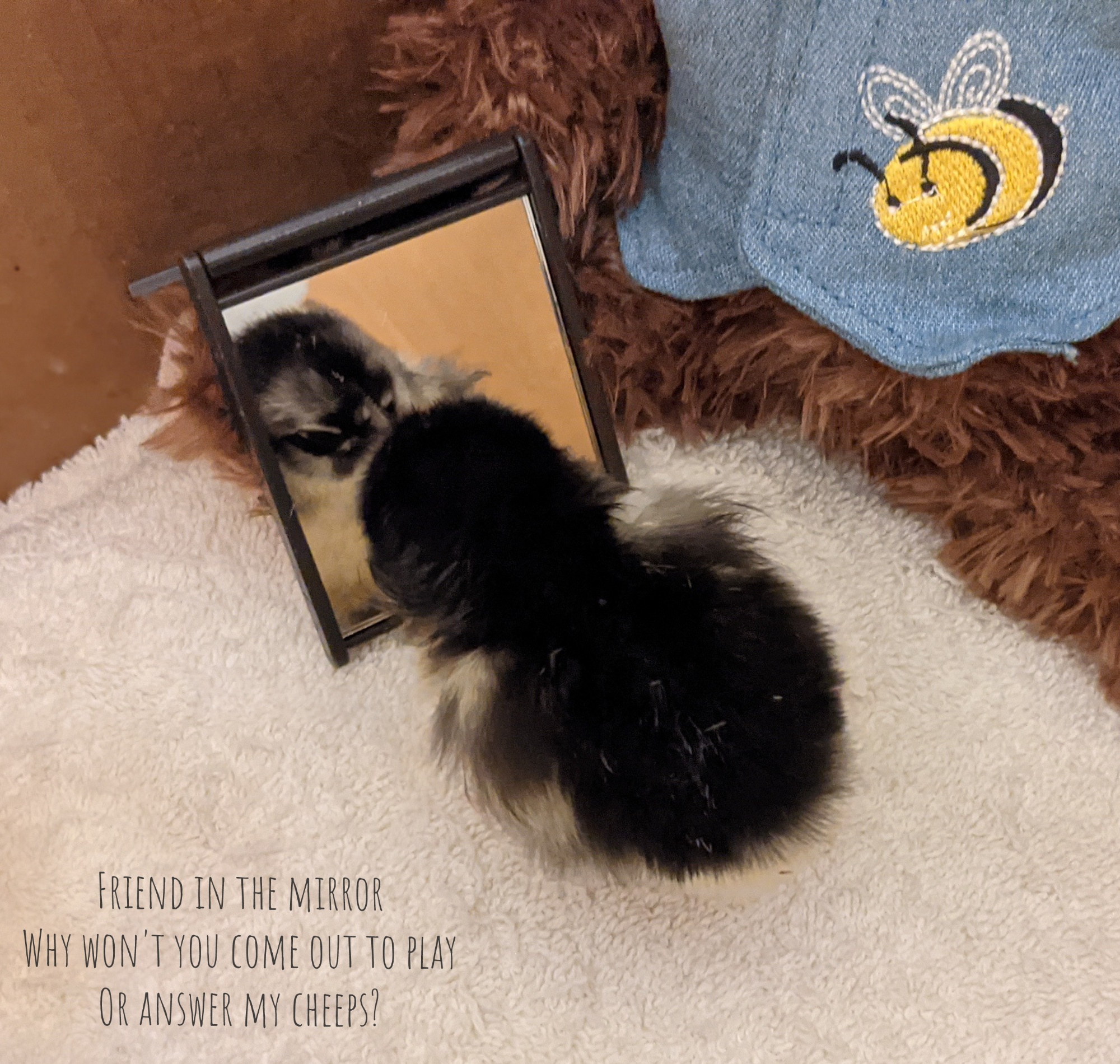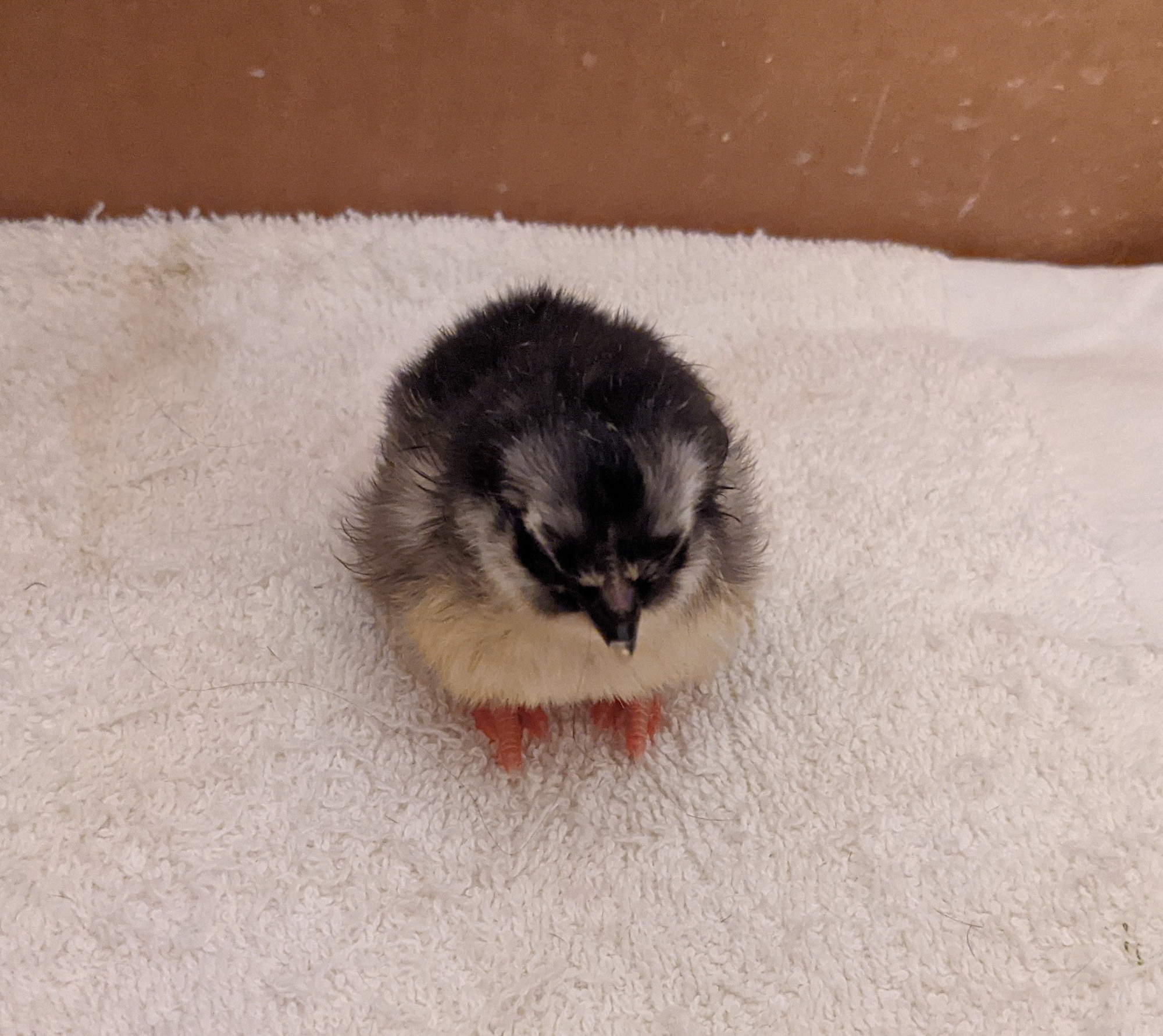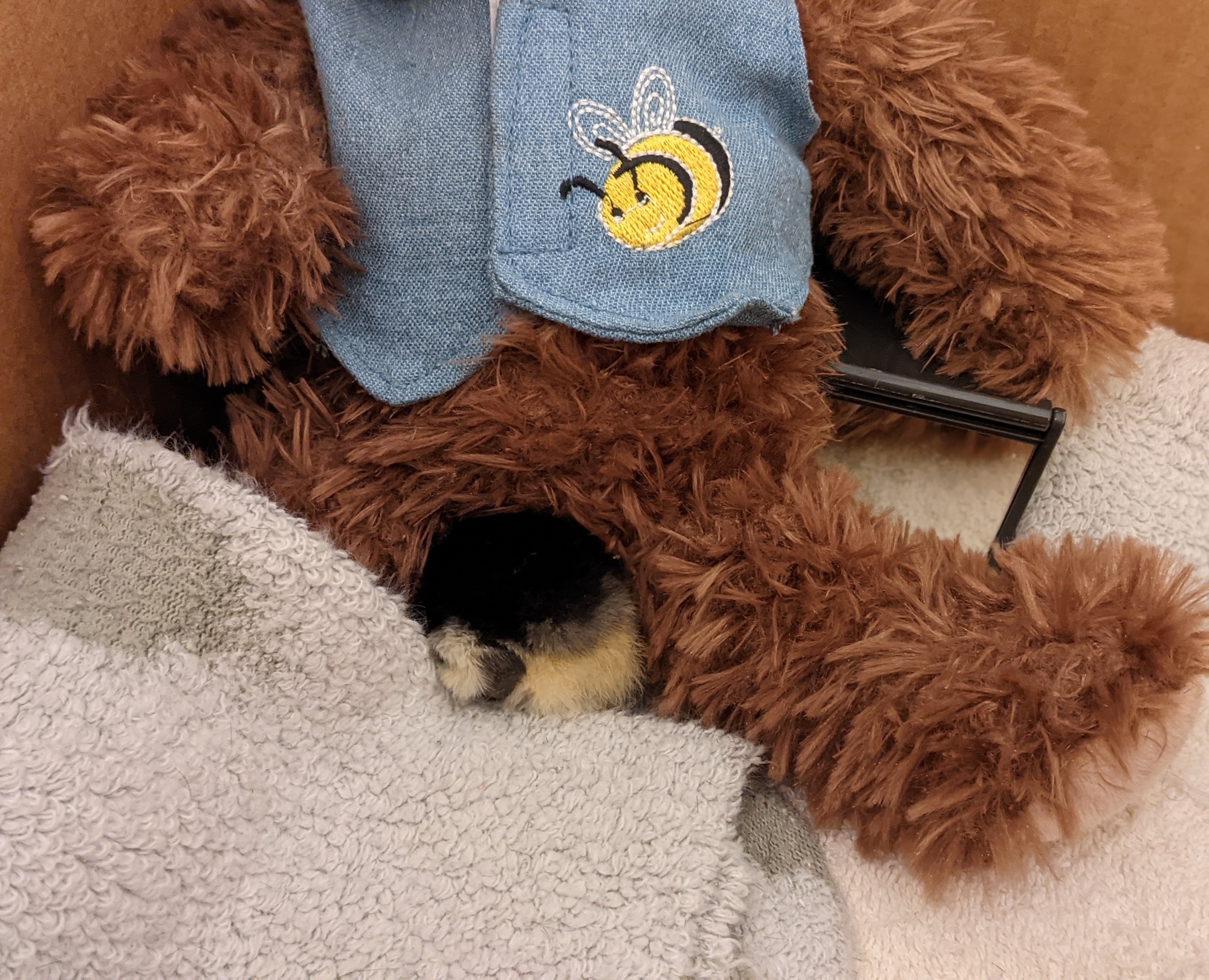
The first hatch of the year is over, and, sadly, there’s just one chick. A combination of factors (early season eggs, a fiddly incubator, and a small number of eggs set) culminated in just one healthy, vigorous hatchling. But one is always better than none.
While it may seem like an inauspicious start, I know that the risk of a single hatchling really is there every time I incubate eggs. That said, it’s extremely rare…and with many hatches under my belt, I’ve only hatched a solo gosling and a duckling (another solo duckling hatched under a broody) once, and a solo chick twice (the other hatching from shipped eggs). Statistically, the probability has proven to be extremely low. It’s always a disappointment, though, when the realization sets in that the single hatchling isn’t going to have any companions.

In the case of the solo gosling, I was able to (at least briefly) pair it with another recent hatchling – a chick. It worked well for a short while, but the gosling began noodling the chick’s tailfeathers to the point that they began to fall out. Separating the gosling from the chick turned out fine, as it seems that the greatest need for a friend is very early on. The gosling grew into a lovely goose and, with her mate, lives on a nearby farm.
The first solo chick (from a dozen shipped eggs) was successfully paired with another, older, chick with special needs. They were fast friends, but, eventually, the older chick’s leg problem necessitated separation. The solo chick grew into a beautiful black Silverudd’s Blue hen who is a treasured part of our main breeding group. She’s friendlier than the others, too – a bonus to hand rearing.
One duckling, broody hatched but hand-raised, grew into a handsome fawn and white drake and is a part of our Runner group. The other duckling was rehomed with an individual whom I trust, but died shortly afterward. I suspect that the long, drawn-out hatch took its toll (it may have burned through its yolk reserves) and that, while it appeared normal, it was already in a weakened state. I also wonder if the terrible loneliness of being without another duckling may have contributed, too.
A single hatchling is acutely aware that it’s alone. From the time this chick hatched, its cries encouraged any other yet-to-be hatched chicks to emerge and join it. In the incubator, the chick cheeped and cheeped, hoping in vain for an answer; in the brooder, its forlorn cheeps reverberate.
I’ve set the little one up with a soft, fuzzy bear and a small mirror to mimic another chick. The chick was so excited when it saw the “other” chick – its cheeps went from disconsolate to delighted! It chirped up a storm, so happy another had joined it. I felt a little guilty about the deception, but the chick really did seem more relaxed and, importantly, quieter.
When I checked on the chick a bit later, it was snuggled right into the bear, atop the heating pad, asleep.

I covered the chick with a woolly sock (repurposed threadbare farm socks – doesn’t take long around here) to help keep it warm and cozy – young chicks have difficulty regulating their body temperature, so supplemental heat is vitally important. The chick still “distress cheeps” periodically, as though calling to unseen brethren…but I’m hoping that as time passes, it forgets that others should also be there.
As I hold the tiny chick in my hand and it wiggles down into the warmth, I’m reminded of how awesome – in its truest sense – hatching of precocial animals like poultry really is: chicks emerge ready to run, eat, drink, survive. It never fails to impress me. If you watch the video below, prepare for cuteness overload.
Want to avoid a single-hatchling scenario? First, there are no guarantees that even a single egg will successfully hatch…but there are some steps that can be taken to increase the likelihood of ending up with more than one hatchling.
◾Most obviously, if possible, setting a greater number of potentially-fertile eggs will increase the probability of hatching more than one chick/duckling/gosling/keet (etc.).
◾I find that spring, summer, and fall eggs tend to have greater fertility than winter eggs (and who can blame the chickens when it’s cold and snowy?), so setting eggs during those seasons may also help.
◾Ensuring consistent temperatures in your incubator by starting it and checking temperature for at least a couple of days prior to setting the eggs may also help avoid temperature fluctuations, especially at the beginning of incubation. The alternative is adding the eggs and then finding the temperature stabilizes too low, or (worse) too high. Avoid late-night incubator babysitting and, after confirming it’s holding temperature, set eggs early in the morning and periodically check temperature throughout the day.
◾Finally, if at all possible, set eggs when you have other batches hatching near the same time, and ideally with chicks from breeds of similar size. Chicks may often be integrated with other chicks within the first week after hatch; some chicks may integrate successfully even after that, but limiting age disparities to a range of a few days to a week should facilitate the smoothest integration. Of course, all chicks are different and integrations even with chicks should be performed under close supervision in case conflict arises, to prevent injury or death. Remember, they’re basically tiny, fluffy dinosaurs!
With luck, this lone chick will grow and thrive, and – someday – join a flock of its own. Stay tuned for updates!
